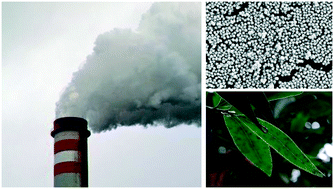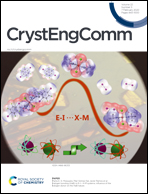The role of ultramicropores in the CO2 adsorption capacity of Fe–BTC crystallites synthesized with a perturbation-assisted nanofusion synthesis strategy†
Abstract
Herein, we report the highest BET surface area (1312 m2 g−1) and the highest total pore volume (1.41 cm3 g−1) reported for Fe–BTC to date. More importantly, a CO2 adsorption capacity of 27.5 wt% (6.24 mmol g−1) is achieved at 8.5 bar and 298 K, which is the highest reported value for Fe–BTC to date. A perturbation-assisted nanofusion mechanism is used to synthesize Fe–BTCs, which form hierarchical pores. The synthesis parameters are optimized to enhance the amount of CO2 adsorbed. The highest CO2 adsorption capacity is achieved by Fe–BTC, which has ultramicropores (pore diameter <0.7 nm) in its pore structure. This measured CO2 uptake capacity (1 bar and 298 K) is higher than those of the MOFs (MOF-177, UMCM-1, MIL-101(Cr), ZIF-8, and MOF-5) reported in the literature. Herein, we experimentally prove the significant contribution of ultramicropores and narrow micropores for the adsorbed CO2 amount. In conclusion, this study i) reports a strategy that increases the BET surface area (1.6 times), total pore volume (3.1 times) and CO2 adsorption capacity (1.66 times) and ii) shows the critical role of ultramicropores and the volume and distribution of narrow micropores on the adsorbed CO2 amount. The reported synthesis strategy can lead the way for the synthesis of highly porous sorbents with an enhanced BET surface area, total pore volume and CO2 sorption capacity, which should be further examined for other porous sorbents to achieve CO2 sorption goals.



 Please wait while we load your content...
Please wait while we load your content...